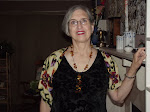NOTE: I wrote Scorched: Earth, Energy, and Women as a submission to an art exhibition and literary reading titled Earth/Energy: Through Women's Eyes. It was published in a chapbook with other selections, but it has a very limited sphere of influence in that format. I want to share it with more people, so I am putting it on my blog. Someone researching the topic may run across it and find it useful. ~LD
_______________________________________________________________________________________________________________________________________________________________________________________________________________________________________________
The first woman to throw a haunch of venison onto a pile of
burning sticks began an intimate relationship between women, the earth, and
energy that continues to this day. The earth produces combustible materials –
biomass – that women have used since prehistory to cook meals, heat homes, and
provide lighting. Research quantifies that women worldwide do the majority of
the work associated with these tasks, a conclusion that most women would find
self-evident.
The major source for household energy for half the world’s
population is biomass, primarily wood, dung, or coal. When those fuels are
scarce, leaves, grass, and agricultural residue are secondary resources. The
half of the world’s population that does not rely on biomass are primarily
urban dwellers in third world countries and the general population in developed
countries who cook and heat their homes with biofuels like liquefied petroleum
gas, natural gas, kerosene, and methane.
It is reasonable for those of us living in fuel-rich America
to ask what difference it makes if third world women use biomass or biofuel in
their homes. Do you want to cook? Turn on your stove. Its burners will glow
with electric heat or erupt in a tiny ring of clean, blue, natural gas flame. For
backyard grilling, we use bottled gas or a bag of charcoal. The most
inconvenienced the average women here ever gets is when she goes on a camping
trip that requires a wood fire. Cooking out while camping is considered
enjoyable and chopped wood is readily available in campgrounds and at the
grocery store.
Contrast the casual availability of cooking and heating fuel
in our homes to the daily grind of a rural villager in any underdeveloped
country. Women and children gather most of the biomass fuel used in these
homes. Sometimes they use the byproducts of their gardens for fuel. Often, they
try to conserve fuel sources for future use by protecting common areas
surrounding their villages from overgrazing or deforestation. But the reality
for most of these women is that biomass is scarce.
Fuel scarcity is a problem for 60 percent of the households
in Africa, 80 percent in Asia, and nearly 40 percent in Latin American and the
Caribbean. Women and children spend hours searching for available fuel. In
fuel-scarce areas, the time needed to collect fuel for household use can range
from one to five hours per household per day.
Why does that matter? It matters because there are that many
fewer hours to grow food, to go to school, or to produce goods to sell. The
list could go on. Without cooking, the basic foods of most poor cultures - rice
and beans - are inedible. Without hot water, bodies and clothing remain unwashed.
Without heat, families suffer in cold weather. And the arduous journeys to
distant locales undertaken daily to secure fuel often put women and girls in
harms way.
The irony is that once these families acquire the day’s
ration of wood, dung, or coal, their problems increase. Biomass fuels do not
burn well and emit toxic fumes that cause health problems in the women and
children exposed to them. In one paper, the authors assert that “Biomass fuel
used for cooking results in widespread exposure to indoor air pollution,
affecting nearly 3 billion people throughout the world.” The authors further state
that an estimated 2.2 – 2.8 million deaths annually occur because of indoor air
pollution from biomass fuels. One million of these deaths result from acute
lower respiratory infections among infants and children. Other reports note
that indoor air pollution from biomass fuels has caused increases in the
incidence of both tuberculosis and blindness among users.
Where does the knowledge of one more problem among poor and
destitute women leave us? Short of inventing the perfect, low-cost, renewable
energy technology, how can we help? Two things stood out as I read papers and
articles on women and energy. First, this is a gender issue and political
action to secure gender equality at home and internationally is crucial.
Second, Non-Governmental Organizations are out there working on the problem and
they need donors and volunteers.
Now that you know about the issues, I hope that you are
motivated to educate yourself about using the Earth’s biomass as energy. Any
way you can help solve these problems will make a difference.





